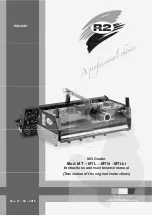
First Aid Method
iv
First Aid Method
Flow of Cardiopulmonary Resuscitation (CPR)
A person is collapsing.
- Secure the safety of the surrounding area.
- Prevent secondary disasters.
Check for response.
-
Call while tapping the shoulder.
Breathing
Recovery position
-
Lay the injured or
ill person on
his/her side and
wait for the arrival
of the emergency
services.
Not responding
or indeterminate state
Ask for help.
-
Make an emergency call.
-
Ask to bring an AED.
Listen to the appeal of the
injured or ill person and give
the necessary first-aid
Responding
Chest compressions
- With each compression, depress the chest
wall to a depth of approximately 5 cm.
- Perform compressions at the rate of 100 -
120 times per minute.
Combination of chest compressions and
rescue breaths Note(1)
- If the first-aider is not trained in rescue
breaths, he/she should perform only chest
compressions. See Note(1) for the details.
Note(1) Combination of chest compressions and
rescue breaths
- If the first-aider is not trained in rescue breaths,
he/she should perform only chest compressions.
- If the first-aider is trained in rescue breath, and has
the skill and will to do it, he/she should perform the
combination of chest compressions and rescue
breaths at the ratio of 30:2. If there is a fear of
infection, he/she should use a personal protective
equipment (mouthpiece for rescue breathing).
Check for breathing and judge cardiac arrest.
-
Check for breathing.
Arrival of an AED
-
Turn on the power.
- Use the AED by following its voice prompts.
Fitting of the electrode pads, etc.
Automatic electrocardiogram
analysis
-
Do not touch the injured or ill
person.
Electric shock is needed.
Electric shock is not needed.
Delivery of electric shock
Resume CPR from chest
compressions by following the
voice prompts of the AED.
When the injured or ill
person has been
handed over to the
emergency services or
has started moaning or
breathing normally, lay
him/her on his/her side
in a recovery position
and wait for the arrival
of emergency services.
When to
stop CPR
A person is collapsing.
- Secure the safety of the surrounding area.
- Prevent secondary disasters.
The AED
automatically
analyzes the
heart rhythm
every 2 min.
If you call an ambulance, you can get instructions regarding
how to judge cardiac arrest and how to do cardiopulmonary
resuscitation (CPR).
Not breathing or indeterminate state
Summary of Contents for JFE-400
Page 1: ...Echo Sounder INSTRUCTION MANUAL ...
Page 2: ......
Page 19: ...Explanation of Terms xvii Blank Page ...
Page 34: ...2 Control Panel 2 2 Blank Page ...
Page 38: ...3 Display 3 4 Blank Page ...
Page 58: ...4 Operation 4 20 2 HISTORY print mode 3 LOG print mode Depth data and graph ...
Page 80: ...6 Consider Installation 6 6 2 Blank Page ...
Page 84: ...8 Disposal 8 2 Blank Page ...
Page 86: ...9 Specification 9 2 Blank Page ...
Page 102: ...10 Appendix 10 16 Blank Page ...
Page 103: ......







































